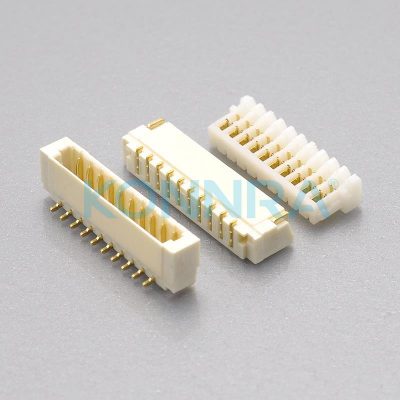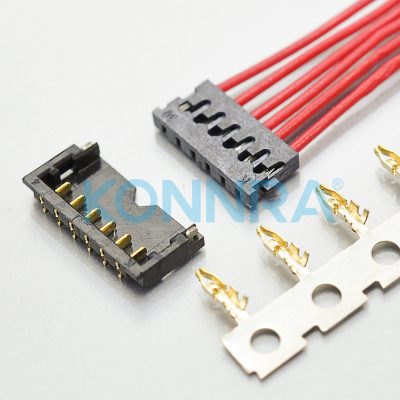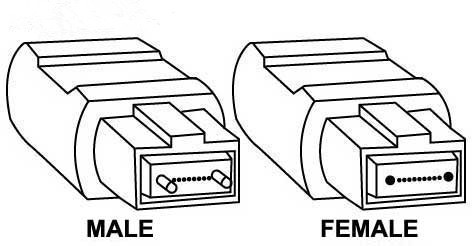- Connector: usually installed on the cable or equipment, for the transmission line system electrical connection of the detachable components (except adapters)

Konnra connector KR0800 0.8mm micro IDC wire to board connector - Rf connector: It is a connector used in the RF range.
- Video: Radio waves in the frequency range from 3HZ to 30MHZ.
- Radio frequency: Radio waves with a frequency range from 3000 HZ to 3000GHZ.
- High frequency: Radio waves whose frequency range is between 3MHZ and 30MHZ.
- Coaxial: the inner conductor has a medium support, and the structure can obtain the minimum internal reflection coefficient within the frequency range in the measurement.
- Triple coaxial: A transmission line consisting of three concentric conductors with a common axis and mutual insulation.
- Grade: The level of the connector in terms of mechanical and electrical precision, especially in terms of the specified reflection coefficient.
- Universal connector(Level 2) : A connector that is manufactured with the widest allowable dimensional deviation (tolerance) but still guarantees a minimum of specified performance and interoperability
Note: The reflection coefficient requirements may or may not be specified.
- High-performance connector(level 1) : A connector that specifies the reflection coefficient limit value according to the frequency change, usually the specified dimensional tolerance is not stricter than the corresponding level 2 connector, but the need to ensure that the connector meets the requirements of the reflection coefficient, the manufacturer has the responsibility to choose a stricter tolerance.
- Standard test connector (Level 0) : A specific type of precision manufactured connectorused to measure the reflection coefficient of level 1 and 2 connectors, and the error caused by the measurement results can be negligible.
Note: Standard test connectors are usually part of intertype adapters, and adapters connected with precision connectors form part of the test equipment.
- Seal
12.1 Sealed connectors: Connectors having the ability to meet specified gas, moisture or liquid sealing requirements.
12.2 Barrier seal: A seal that prevents gas, moisture or liquid from entering the interior of the connector housing along the axis.
12.3 Panel seal: A seal between the fixed or adapter housing and the panel that prevents gas, moisture or liquid from entering through the mounting holes.
Note: Seals are usually provided as stand-alone products.
12.4 Insert face seal: A seal that prevents gas, moisture, or liquid from entering the interface of a pair of insert connectors.
12.5 Gas seal: meet the requirements of test Qk in IEC60068-2-17 “Basic Environmental Test Procedures Part 2: Test – Test Q: Seal”.
The connector basic structure
The basic structural parts of the connector have ① contact parts; ② Insulator; ③ Shell (depending on the variety); ④ Accessories.

Konnra connector KR1200 pcb board electrical connector - contacts are the core parts of the connector to complete the electrical connection function. Generally, the contact pair is composed of positive contacts and negative contacts, and the electrical connection is completed through the insertion of Yin and Yang contacts.
The positive contact is a rigid part with a cylindrical shape (round pin), a square column shape (square pin) or a flat shape (insert). Positive contacts are generally made of brass or phosphor bronze.
The negative contact part is the jack, which is the key part of the contact pair. It relies on the elastic deformation of the elastic structure when inserting the pin and generates the elastic force to form close contact with the positive contact part to complete the connection. There are many types of jack structures, such as cylinder type (split slot, reduced mouth), tuning fork type, cantilever beam type (longitudinal slot), folded type (longitudinal slot, figure 9), box shape (square jack) and hyperbolic wire spring jack.

- Insulator Insulator is also often called base or insert, its role is to make the contacts arranged according to the required position and spacing, and to ensure the insulation performance between the contacts and the contact between the shell. Good insulation resistance, voltage resistance and machinability are the basic requirements for selecting insulating materials for processing into insulators.
-
- The shell, also known as the shell (shell), is the outer cover of the connector, which provides mechanical protection for the internal insulation mounting plate and pin, and provides alignment when the plug and socket are inserted, and then fixes the connector to the device.
- Accessories Accessories are divided into structural accessories and installation accessories. Structural accessories such as fasteners, positioning keys, positioning pins, guide pins, connecting rings, cable clamps, sealing rings, gaskets, etc. Mounting accessories such as screws, nuts, screws, spring rings, etc. Most accessories have standard parts and universal parts.
Company News










